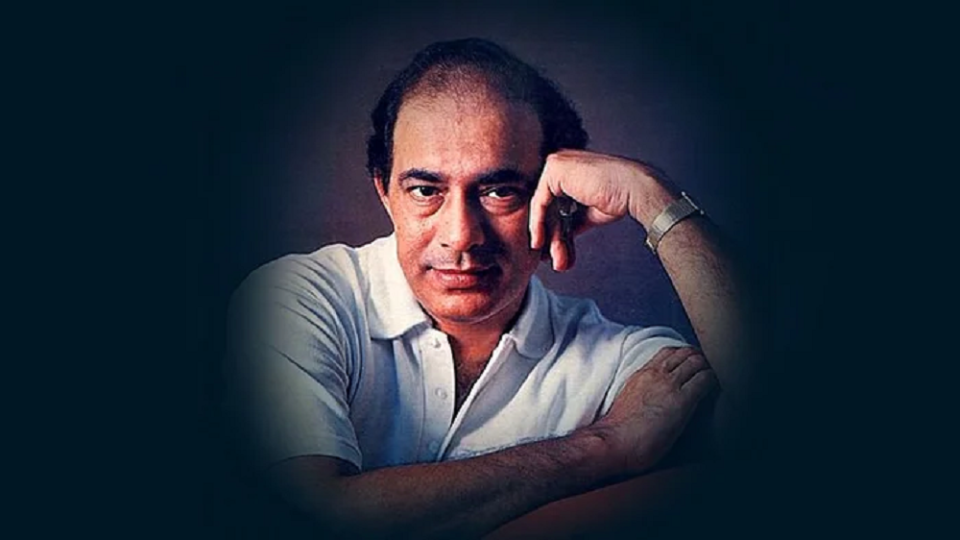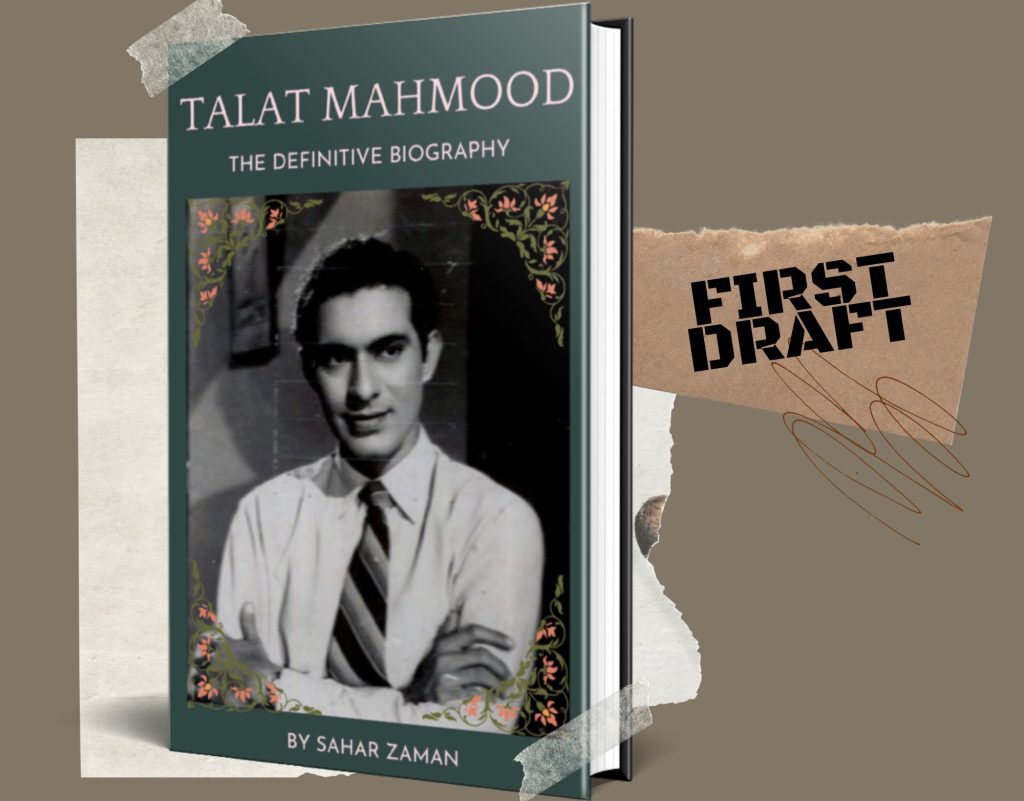
Talat Mahmood: Trailblazer with a velvet voice, a gentle mould-breaker

Every anniversary of Talat Mahmood (1924-1998) causes a rush of dedicated music shows on radio, articles in print and tribute concerts in remembrance of the unique music sensibilities that he brought to mainstream cinema as well as the independent ghazal music industry. I have spent almost a year writing the first-ever definitive biography of Independent India’s first singing star. The first draft is ready!
The idea for writing this biography came to me while I had been curating tribute concerts dedicated to him called ‘Jashn-e-Talat’. Inching closer to his centenary year, this exclusive work of non-fiction will soon be in the hands of music lovers across the world, to enjoy and marvel at his pioneering journey.
This is the story of an artist whose career cuts across the history of India. It traces his trajectory from being a pre-independence radio celebrity to being Independent India’s film star. Coming from an educated and modern Muslim family that supported our freedom movement and deciding to stay back in India for the newly-founded nation’s secular credentials, this is a musical journey in which the birth and evolution of India is closely entwined.
The gentle mould breaker
I have often described him as the gentle mould-breaker. But why does a singer from the Golden Era need to be called that? Because he was an artist who redefined the idea of romance and straddled many singing careers together. He had a phenomenal run in the Hindi film industry, a steady stream of Bengali hits in the name of Tapan Kumar, an independent identity as the most prominent ghazal singer and the busiest singer at the world tours circuit.
Also read: How SH Raza and Progressive Artists’ Group put India on international art map
The biography explores his indelible mark on the Golden Era of films by taking you behind the scenes of moments from the recording studio, personal friendships with colleagues and the impact of his stardom. He was the voice of Dilip Kumar who epitomized tragedy in the song ‘Ai dil mujhe aisi jagah le chal’. When Sunil Dutt woos Nutan over the phone with ‘Jalte hain jiske liye’, it felt as if you were at the other end of the receiver. And when Bharat Bhushan plays the role of Mirza Ghalib decoding the mysteries of the heart with ‘Dil-e-nadaan tujhe hua kya hai’, TalatMahmood poured his heart out in each written word and the poetry sparkled like diamonds when it was encased in his soft, velvety voice. His charming mannerisms and good looks got him cast on camera as the main hero in a dozen Hindi films opposite Nutan, Mala Sinha, Suraiya and Shyama. Little wonder he was called the ‘King of Romance’ by some fans.
‘The King of Ghazals’
Apart from his thriving film career, his parallel career in non-film ghazals since the 1940s earned him another popular title, the ‘King of Ghazals’. He gave record-breaking sales to music labels and often experimented with Western sounds of the guitar and drums used in ghazals. Today, the independent music industry in the genre of ghazals across South Asia rests largely on his shoulders. He had a life-long dedication to the class of Urdu poetry and had the masses learn the language through his finesse and appeal. Talat fans will be delighted to read personal insights in the book about how later legends such as Mehdi Hasan and Jagjit Singh chose to become ghazal singers only because they were die-hard Talat fans.

There is a mystery behind his Calcutta days in the 1940s when he was picked up as a young talent by the then giant of the music industry Pankaj Mullick and signed up on contract by the New Theatres studio. “Tasveer teri dil mera” was his first song recorded for Mullick. The ghazal broke all records which is when Mullick put him up on an unexpected challenge to learn Bengali and start his career as Tapan Kumar. I feel blessed to be his grand-niece where members of my family have dug into their archives of old letters, diaries and incidents to revisit his young days and help recreate exclusive insights for the biography.
Charted the path for other singers
In the course of my research, I realised that since he was the first Indian playback singer ever to start world tours in 1956, he ended up charting the path for other singers who followed suit. His world tours helped ascertain where the NRI population was willing to organise tours and buy tickets for these Hindi film music shows. Right through the 1960s and ‘70s, when Talat chose to reduce his film recordings with the rising decibel levels in Hindi music, he turned to concerts full-time.
He was often the first artist to perform for local NRI clubs across the United States of America and the United Kingdom. The first generation of Indian immigrants would long to have someone visit from India and play them the music of their homeland. Many of these immigrants became rich businessmen and established cultural clubs that started inviting singers from India. Inevitably, Talat was often the first to perform for them which set the ball rolling for the entire film music industry.
Also read: How ‘Sankalpa’ carved a niche for itself in Kannada cinema history
Careers of many concert organisers got established through this. It has indeed been a delight for me to get in touch with some of these clubs and organisers who remember Talat with great fondness as someone who generously performed for the NRIs. This had helped popularize their local clubs, many of which are today celebrating 50 years of their existence.
Talat, the activist
With Talat’s continuous travel and exposure to the Western music labels, he developed a fine understanding of their royalty rights for singers. This is where Talat, the activist, steps in. In the 1960s, he took charge of the Playback Singers Association as the Secretary. There was already a buzz about the right to royalty fees for playback singers. In his official capacity, Talat led the way, along with his friends Mukesh, Kishore Kumar and Lata Mangeshkar. After talks fell through with music labels, the singers decided to call a strike. It was the longest strike of singers that the film industry had seen for the cause. It was a moment when music labels and film producers could no longer look away from this demand.
Unfortunately, two other prominent singers left the strike which pushed the demand into the backburner. Nevertheless, Talat left an impact on an issue which has come a long way in helping give singers their right to royalty. While speaking to insiders, I have been given to understand that this was a defining moment for the industry.
Apart from his professional milestones, the biography deeply touches on Talat, the person — as a son, a husband, a family man and a supportive father. What was he as a young child in Lucknow, his ambition as a young teenager and who helped him through those trying years where he had to make a choice between his father’s house or his music career.
There were moments when his singing had to be kept under wraps but his siblings and aunt helped him sail through. What emerged with Talat’s trailblazing decisions was a man who set an example for the family on how to live life on his own terms. How to live for music and live for love. His choice of songs and his choice of life partner. A life and career which ended on a high with the Padma Bhushan. One of my personal favourites is the evening we all met him at his hotel room in Delhi to celebrate the honour. But for all these details and more, wait for the biography.
Sahar Zaman is a television news anchor and editor in the national media. She is the Chief Curator of ‘Jashn-e-Talat’. Her biography of Talat Mahmood, her grand-uncle, will be out soon.


